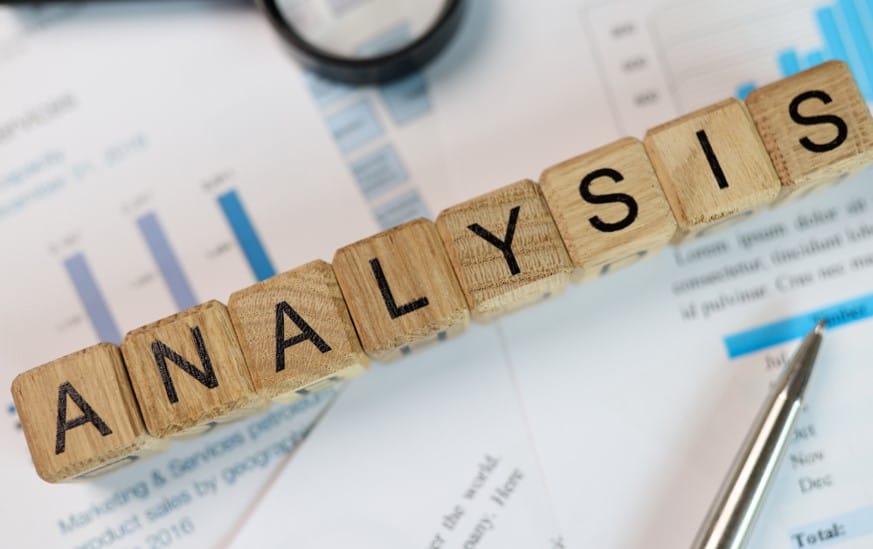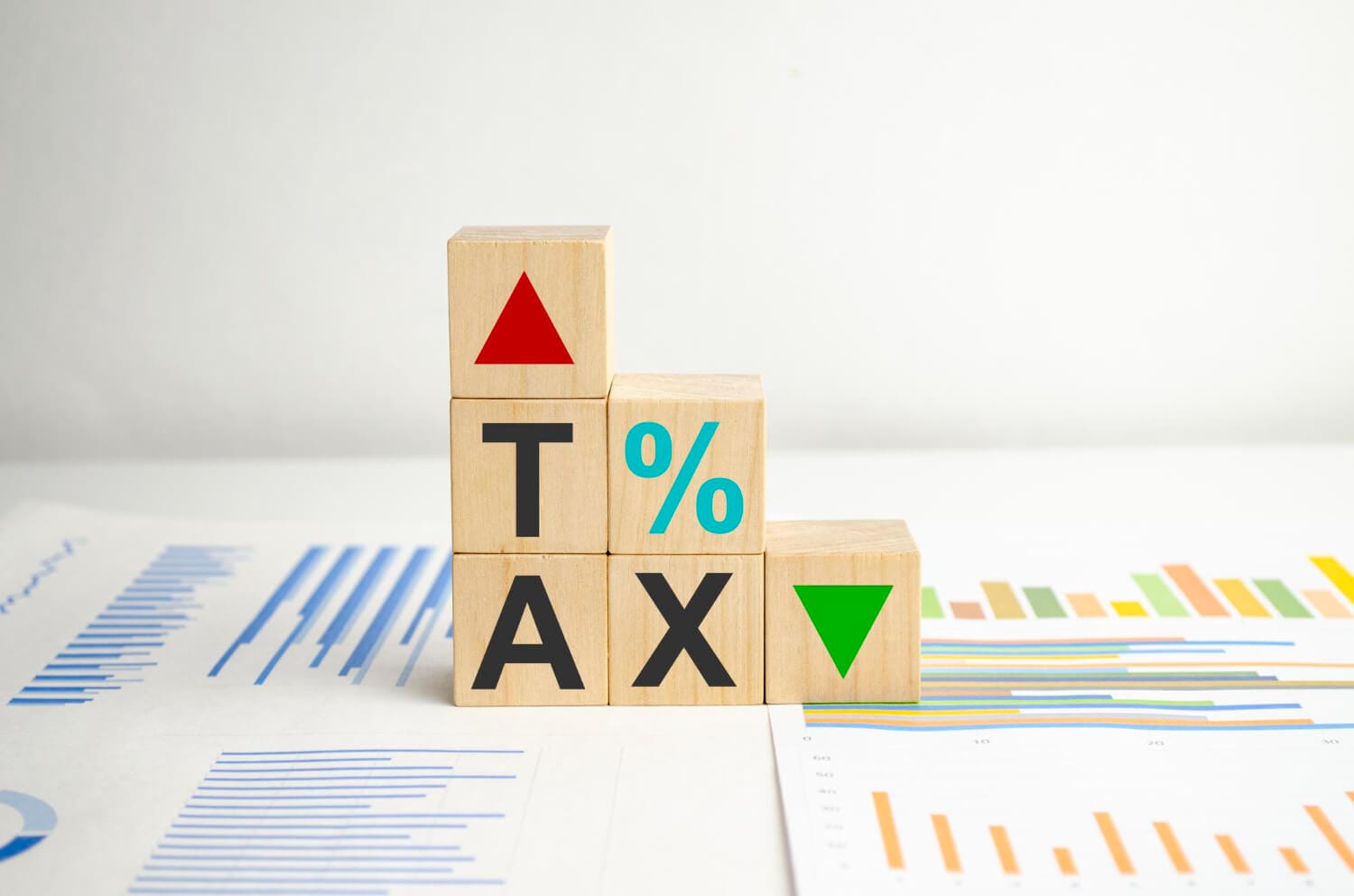I. Introduction
1. Overview of the Forex Market
The Forex (foreign exchange) market is a global financial marketplace where participants trade currencies. This section provides a foundational understanding of how the market operates, the decentralized nature of Forex, and the primary participants involved. It outlines the basic structure of currency trading, emphasizing that currencies are traded in pairs and explaining the concept of base and quote currencies.
2. Importance of Profit Maximization
Here, we delve into the fundamental principle of profit maximization in Forex trading. It highlights the primary goal of traders, which is to generate profits by capitalizing on fluctuations in exchange rates. The discussion emphasizes the dynamic and competitive nature of the Forex market and the need for traders to actively seek strategies that enhance their profitability.
3. Setting Realistic Goals
This part focuses on the necessity of setting achievable and realistic goals in Forex trading. Traders need to establish clear objectives that align with their financial aspirations and risk tolerance. The section guides traders in creating measurable goals, such as setting profit targets and defining acceptable levels of risk.
II. Understanding the Forex Market

1. Basics of Forex Trading
In this section, the guide covers the fundamental concepts of Forex trading. It explains that currencies are traded in pairs, such as EUR/USD or USD/JPY, and introduces the concept of base and quote currencies. The guide details how currency pairs are quoted in the Forex market, with the first currency being the base currency and the second being the quote currency. Understanding these basics is crucial for initiating trades and interpreting price quotes.
2. Factors Influencing Exchange Rates
This subsection explores the various factors that influence exchange rates in the Forex market.
- Economic Indicators: Traders are introduced to key economic indicators such as GDP growth, employment figures, and inflation rates. Understanding these indicators helps traders assess the economic health of a country, influencing currency values.
- Political Events: The guide emphasizes the impact of political events on currency markets. Elections, policy changes, and geopolitical developments can create volatility and affect exchange rates.
- Market Sentiment: Traders learn about the significance of market sentiment, including how perceptions and emotions of market participants can drive currency price movements. The guide explains the role of speculative trading and investor sentiment in shaping trends.
3. Technical Analysis

Technical analysis involves studying historical price data to predict future price movements. This part introduces traders to key technical analysis tools:
- Candlestick Patterns: The guide explains common candlestick patterns and how they can provide insights into market sentiment. Patterns like doji, engulfing, and hammer are discussed.
- Trend Lines and Channels: Traders learn how to draw trendlines to identify the direction of price movements. Channels, formed by connecting trendlines, help traders visualize price ranges.
- Indicators (RSI, MACD, Moving Averages): The guide introduces popular technical indicators such as the Relative Strength Index (RSI), Moving Average Convergence Divergence (MACD), and simple and exponential moving averages. These indicators assist traders in identifying potential entry and exit points.
Understanding the basics of Forex trading, the factors influencing exchange rates, and the tools of technical analysis provides traders with a solid foundation for making informed trading decisions. It allows them to interpret market dynamics, identify potential opportunities, and manage risks effectively.
III. Developing a Profitable Trading Strategy
1. Fundamental Analysis

Fundamental analysis involves evaluating the economic and financial factors that influence currency values. This section provides insights into the following components:
- Economic Calendar: Traders learn about the economic calendar, a tool that provides a schedule of important economic events and indicators. These events, such as interest rate decisions, employment reports, and GDP releases, can significantly impact currency markets.
- Interest Rates: The guide discusses how interest rates affect exchange rates. Central banks use interest rates as a tool to control inflation and stimulate economic growth, influencing the attractiveness of a currency.
- Geopolitical Events: Traders are introduced to the impact of geopolitical events on currency markets. Political stability, trade agreements, and international relations can affect the value of a country’s currency.
2. Technical Analysis
Building on the basics introduced earlier, this section delves deeper into technical analysis techniques:
- Chart Patterns: Traders learn about more advanced chart patterns, such as head and shoulders, triangles, and flags. Recognizing these patterns can help identify potential trend reversals or continuation patterns.
- Support and Resistance: The concept of support and resistance levels is explored in detail. Traders understand how these levels, where prices historically stall or reverse, can act as crucial decision points.
- Fibonacci Retracements: The guide introduces Fibonacci retracements as a tool for identifying potential reversal levels in a trending market. Traders learn how to use Fibonacci levels to anticipate where a price may reverse or continue.
3. Combining Fundamental and Technical Analysis
This part emphasizes the importance of integrating both fundamental and technical analyses for a comprehensive trading strategy:
- Correlation Analysis: Traders learn how different currency pairs may be correlated. Understanding correlations helps in diversifying risk and making more informed trading decisions.
- Trend Confirmation: The guide discusses the significance of confirming trends through multiple indicators and analyses. This involves aligning the signals from both fundamental and technical analyses to increase the probability of successful trades.
Developing a profitable trading strategy involves a holistic approach that considers both fundamental and technical aspects. Traders are encouraged to use fundamental analysis to gauge the broader market context and technical analysis for more precise entry and exit points. This comprehensive strategy aims to increase the probability of successful trades and manage risks effectively.
IV. Risk Management

1. Importance of Risk Management
This section emphasizes the critical role that risk management plays in successful Forex trading:
- Preservation of Capital: Traders are reminded that the primary goal of risk management is to protect their trading capital. By preserving capital, traders ensure they have the resources to continue trading and recover from losses.
- Long-Term Success: The guide highlights that effective risk management is a key factor in achieving long-term success in Forex trading. Consistent profitability is not only about making profits but also about controlling and minimizing losses.
2. Setting Stop-Loss and Take-Profit Levels
This subsection delves into specific risk management tools:
- Stop-Loss Orders: Traders learn the importance of setting stop-loss orders to limit potential losses. A stop-loss order is an instruction to close a trade at a predetermined level to prevent further losses if the market moves against the trader.
- Take-Profit Orders: The guide explains how take-profit orders are used to secure profits by automatically closing a trade when it reaches a specified profit level. Take-profit orders help traders lock in gains and avoid the temptation to hold onto a winning position for too long.
3. Position Sizing Strategies

This part explores different methods of determining the size of a trading position, aligning with the trader’s risk tolerance and overall strategy:
- Fixed Lot Size: Traders allocate a fixed number of lots or contracts per trade, regardless of the size of their trading capital. This approach provides consistency but may not account for changes in market conditions.
- Percentage Risk Model: Traders risk a specific percentage of their trading capital on each trade. This method adjusts the position size based on the size of the trading account, aligning with the trader’s risk tolerance.
- Kelly Criterion: A more sophisticated approach, the Kelly Criterion, considers the probability of winning or losing a trade. It aims to maximize the growth of the trading account by adjusting the position size based on the perceived edge in trades.
Effective position sizing is crucial for managing risk and ensuring that no single trade has the potential to significantly impact the overall trading account.
Understanding and implementing these risk management strategies help traders navigate the uncertainties of the Forex market, control potential losses, and protect their capital over the long term.
V. Psychological Factors
1. Emotion Control

This section addresses the psychological aspects of trading, emphasizing the importance of controlling emotions to make rational decisions:
- Fear and Greed: Traders often face emotions such as fear and greed, which can cloud judgment. The guide explains how these emotions can lead to impulsive decisions, such as exiting a trade too early due to fear or holding onto a losing position out of greed.
- Discipline: Emotion control is closely linked to maintaining discipline in trading. Traders are encouraged to stick to their established trading plans and not deviate based on emotional reactions to market fluctuations.
2. Discipline in Trading
Building on the importance of discipline, this subsection provides further insights into maintaining a structured and systematic approach:
- Trading Plan: The guide emphasizes the creation and adherence to a well-defined trading plan. A trading plan outlines entry and exit criteria, risk tolerance, and overall strategy. Following a plan helps avoid impulsive decisions.
- Consistency: Discipline involves being consistent in trading actions. Traders learn that consistent execution of a proven strategy is more likely to yield positive results over time.
3. Learning from Mistakes

Traders are encouraged to view mistakes as opportunities for learning and improvement:
- Analyzing Trades: The guide recommends a systematic analysis of both successful and unsuccessful trades. By understanding what went right or wrong, traders can adapt their strategies and decision-making processes.
- Adaptability: Learning from mistakes contributes to adaptability. Traders understand that the Forex market is dynamic, and the ability to adjust strategies based on past experiences is crucial for long-term success.
Understanding and managing psychological factors in trading is essential for maintaining a clear and rational mindset. Traders who can control emotions, stick to their plans, and learn from mistakes are better equipped to navigate the challenges of the Forex market and improve their overall performance.
VI. Advanced Trading Techniques
1. Algorithmic Trading

This section introduces advanced trading techniques, starting with algorithmic trading:
- Expert Advisors (EAs): Traders learn about EAs, which are automated trading systems designed to execute trades on behalf of the trader. EAs operate based on predefined rules and algorithms, allowing for automated and precise trade execution.
- Automated Trading Systems: The guide explains the broader concept of automated trading systems, which can include strategies beyond those implemented by EAs. These systems use computer algorithms to analyze market data and execute trades, offering speed and efficiency.
2. Hedging Strategies
Hedging involves using strategies to offset potential losses in one position with gains in another:
- Direct Hedging: Traders learn about directly hedging a position by taking an opposite position in the same currency pair. While it limits potential losses, it also reduces potential gains.
- Cross Currency Hedging: This strategy involves using correlated currency pairs to offset risk. Traders explore how cross currency hedging can be used to protect against adverse market movements.
3. Diversification and Portfolio Management
This part focuses on diversifying trading activities and managing a portfolio of positions:
- Trading Different Pairs: Traders are encouraged to diversify their trades across different currency pairs. Diversification helps spread risk and reduces the impact of a single losing trade on the overall portfolio.
- Asset Allocation: The guide introduces the concept of asset allocation within a Forex portfolio. Traders learn to balance risk and reward by allocating their capital strategically among various currency pairs.
Implementing advanced trading techniques requires a deeper understanding of market dynamics and a more sophisticated approach to risk management. Traders exploring algorithmic trading, hedging strategies, and portfolio management aim to optimize their trading activities and enhance overall performance in the Forex market.
VII. Utilizing Forex Tools and Resources
1. Trading Platforms

This section focuses on the software and interfaces used by traders to execute Forex trades:
- MetaTrader 4 (MT4) and MetaTrader 5 (MT5): These are popular trading platforms that offer a range of features, including advanced charting tools, technical indicators, and automated trading capabilities. The guide explains the functionalities of these platforms and their significance in the Forex market.
- User-Friendly Interfaces: Traders learn about the importance of a user-friendly interface in a trading platform. An intuitive and easy-to-navigate interface enhances the trading experience and allows for efficient order execution.
2. Economic Calendars

An economic calendar is a crucial tool for staying informed about upcoming events that can impact the Forex market:
- Scheduled Economic Events: Traders understand how economic calendars provide a schedule of important economic releases, such as employment reports, central bank decisions, and GDP releases. These events can cause significant market volatility.
- Impact Assessment: The guide explains how traders use economic calendars to assess the potential impact of economic events on currency pairs. High-impact events may lead to increased volatility and present trading opportunities.
3. Forex Signals and Analysis Services
This part introduces external sources of information and insights that traders can utilize:
- Professional Analysts: Traders learn about services provided by professional analysts who offer market insights, trade ideas, and analysis. These insights can complement a trader’s own research.
- Signal Providers: The guide explains the concept of Forex signal providers who offer buy or sell signals based on their analysis. Traders should exercise caution and perform due diligence when considering signals from external sources.
- Automated Trading Systems: The section reiterates the use of automated trading systems and expert advisors that can generate trading signals based on predefined algorithms. Traders explore the benefits and risks associated with using such systems.
Utilizing these tools and resources is essential for informed decision-making in the Forex market. Trading platforms, economic calendars, and external analysis services contribute to a trader’s ability to analyze market conditions and execute well-informed trades.
VIII. Monitoring and Evaluating Performance
1. Keeping a Trading Journal

Maintaining a trading journal is a crucial practice for traders to track and analyze their performance:
- Recording Trade Details: Traders are encouraged to document specific details of each trade, including entry and exit points, the size of the position, the reason for the trade, and any other relevant observations.
- Emotional States: The guide suggests including notes on the trader’s emotional state during each trade. This provides insights into how emotions may have influenced decision-making.
- Post-Trade Reflections: Traders learn the importance of reflecting on each trade after it is closed. This involves analyzing what went well, what could be improved, and identifying lessons learned.
2. Regularly Reviewing Strategies

Periodic review of trading strategies is crucial for adapting to changing market conditions:
- Assessing Strategy Effectiveness: Traders learn how to assess the overall effectiveness of their trading strategies. This involves analyzing performance metrics, win-loss ratios, and other key indicators.
- Identifying Changes in Market Conditions: The guide emphasizes the need to recognize shifts in market dynamics. Traders are encouraged to adapt their strategies when market conditions change, ensuring that their approaches remain relevant.
3. Adapting to Market Conditions
This part focuses on the importance of adaptability in response to changing market environments:
- Recognizing Trends and Volatility: Traders learn how to recognize trends, volatility, and other market conditions that may impact trading strategies. Being aware of these factors allows traders to make informed adjustments.
- Adjusting Trading Plans: The guide underscores the necessity of adjusting trading plans when necessary. This may involve tweaking entry and exit criteria, modifying risk management strategies, or exploring new approaches.
IX. Legal and Regulatory Considerations
1. Complying with Forex Regulations

Understanding and adhering to regulatory requirements is essential for traders:
- Regulatory Landscape: Traders learn about the regulatory environment governing Forex trading. Different regions and countries may have distinct regulatory bodies overseeing financial markets. The guide provides an overview of major regulatory bodies such as the Financial Conduct Authority (FCA), the Commodity Futures Trading Commission (CFTC), and others.
- Compliance with Regulations: The guide emphasizes the importance of trading within the bounds of applicable regulations. This includes understanding leverage limits, margin requirements, and other rules set by regulatory authorities.
2. Choosing Reputable Brokers
Selecting a reliable broker is crucial for a trader’s overall experience:
- Regulation: Traders are guided on the significance of choosing brokers that are regulated by reputable authorities. Regulatory oversight helps ensure fair and transparent practices in the Forex market.
- Broker Reputation: The guide discusses the importance of considering a broker’s reputation in the industry. Traders can research reviews, testimonials, and regulatory records to gauge the reliability and trustworthiness of a broker.
- Transaction Costs and Fees: Traders learn to consider transaction costs, spreads, and fees associated with different brokers. Transparent fee structures and competitive pricing contribute to a positive trading experience.
3. Tax Implications

Understanding potential tax considerations related to Forex trading is vital:
- Tax Treatment of Profits and Losses: Traders are informed about how profits and losses from Forex trading may be treated for tax purposes. Tax implications can vary based on factors such as the trader’s country of residence and the duration of trades.
- Seeking Professional Advice: The guide recommends seeking professional advice from tax experts to ensure compliance with relevant tax regulations. Tax laws can be complex and subject to change, so professional guidance helps traders navigate their specific tax obligations.
X. Conclusion
1. Recap of Key Strategies
The conclusion summarizes key strategies discussed in the guide, reinforcing crucial concepts such as risk management, psychological factors, and the importance of a well-defined trading plan.
2. Continuous Learning and Improvement

Emphasizes the dynamic nature of the Forex market and encourages traders to embrace continuous learning:
- Staying Informed: Traders are urged to stay informed about market developments, economic indicators, and changes in regulatory environments. Continuous learning keeps traders updated on the factors that can impact their trading activities.
- Adapting to Changes: The guide underscores the importance of adapting strategies and approaches in response to changes in the market. Flexibility and a willingness to learn contribute to sustained success.
3. Setting Long-Term Financial Goals
Encourages traders to align their Forex trading activities with long-term financial objectives:
- Financial Planning: Traders are guided to integrate Forex trading into a broader financial plan. This involves setting realistic goals, managing risks, and considering the role of trading within the context of broader financial aspirations.
- Balancing Risk and Reward: The guide emphasizes the need to balance risk and reward in alignment with long-term financial goals. Strategic decision-making and a disciplined approach contribute to achieving desired financial outcomes.
By understanding and following legal and regulatory considerations, choosing reputable brokers, and being aware of tax implications, traders can operate within a secure and compliant framework. The conclusion reinforces the importance of continuous learning, adaptation, and setting long-term financial goals for sustained success in the Forex market.
Don’t trade all the time, trade forex only at the confirmed trade setups.
Get more confirmed trade setups here: forexgdp.com/buy/

